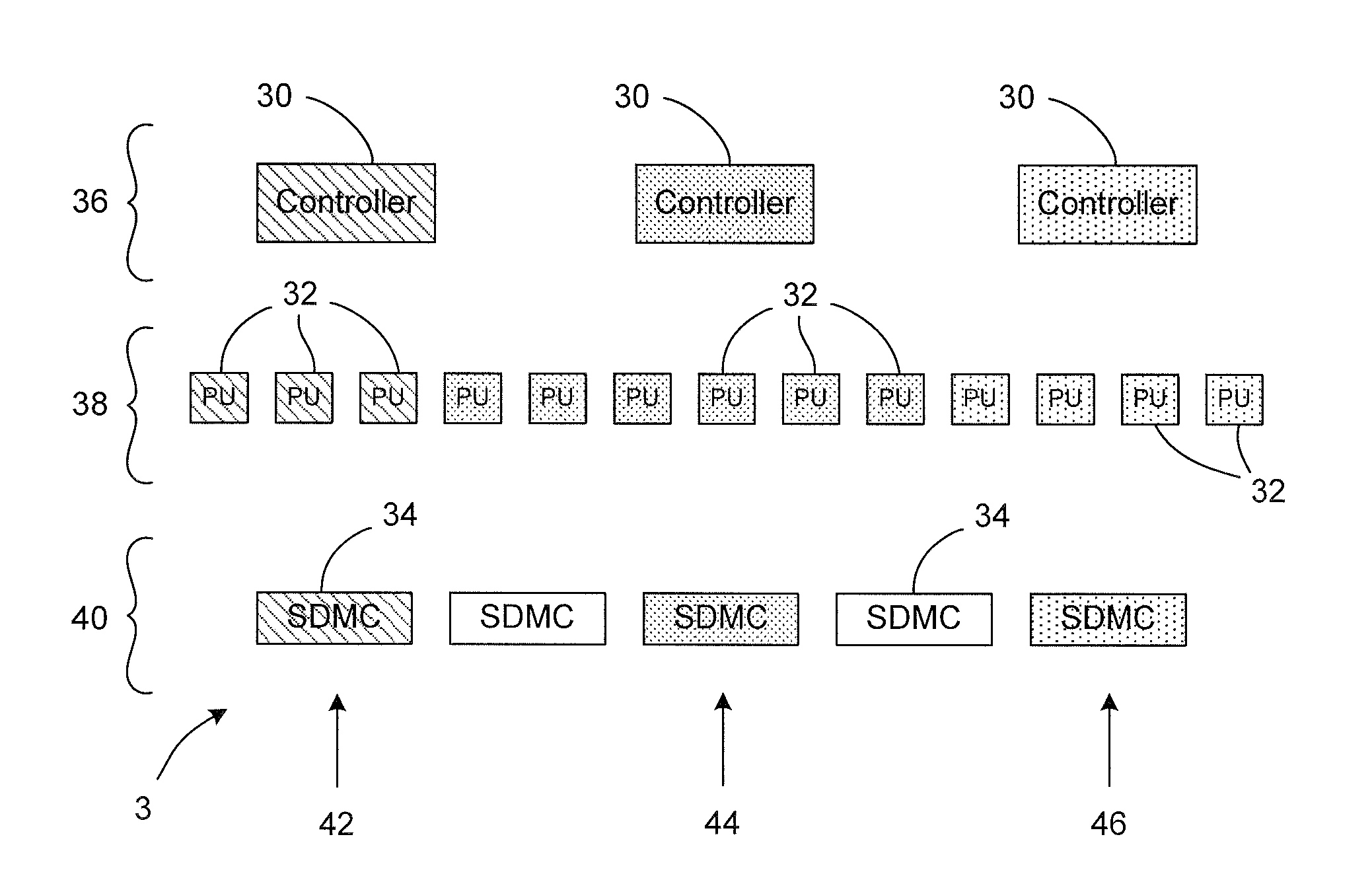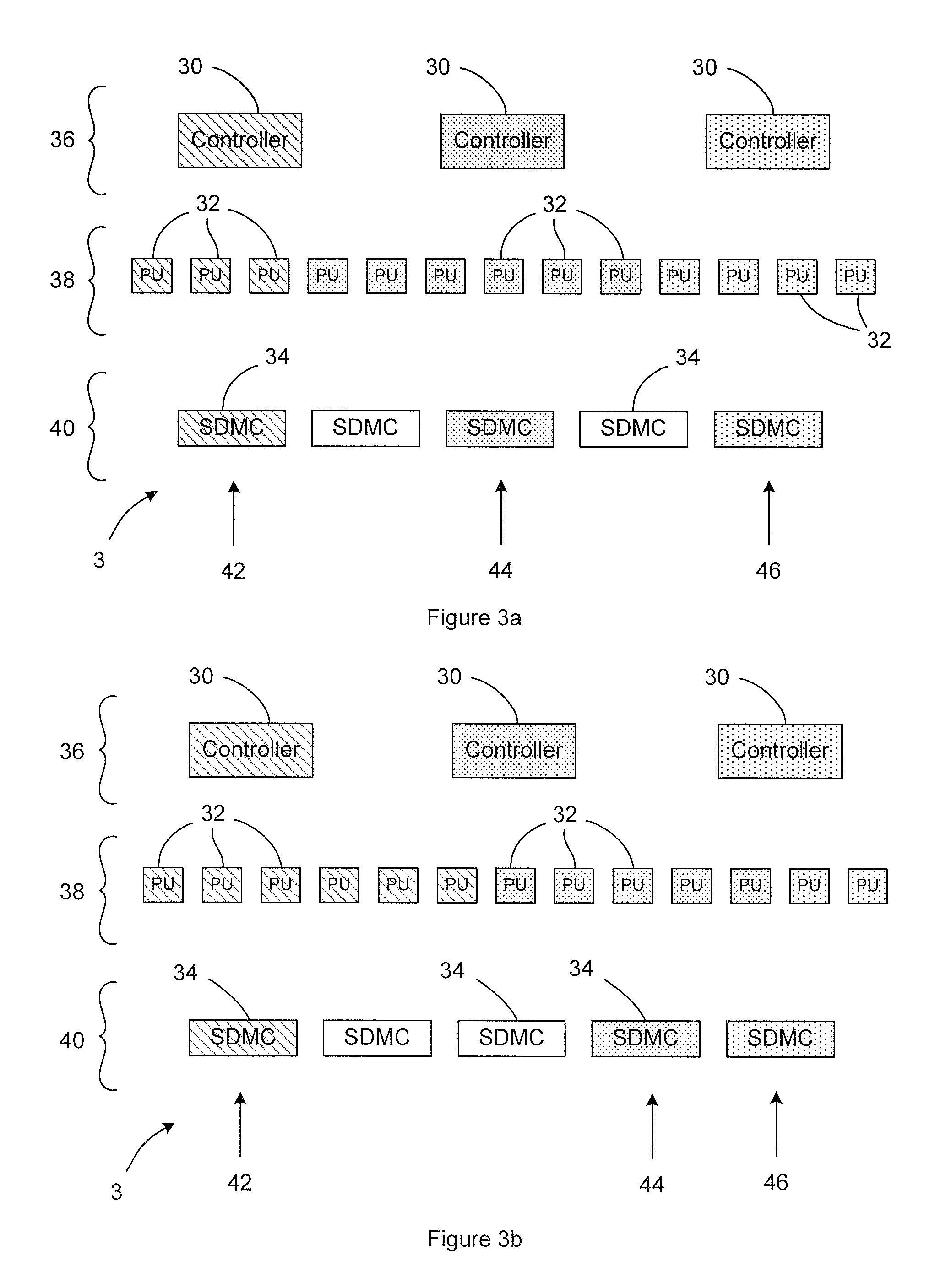Relating to Single Instruction Multiple Data (SIMD) Architectures
a single instruction, multi-data technology, applied in the direction of architectures with multiple processing units, instruments, program control, etc., can solve the problems of limiting the throughput efficiency of the above linedancerTM processor, hard wiring of processing elements (pes), and power consumption, so as to maximise the efficient use of the processing architecture, reduce power consumption, and be configurable in run time
- Summary
- Abstract
- Description
- Claims
- Application Information
AI Technical Summary
Benefits of technology
Problems solved by technology
Method used
Image
Examples
first embodiment
Turning now to the second more detailed level of the description, the specific control architecture of the controller 30 used in the first embodiment is shown in FIG. 5. The controller 30 comprises six main components, namely a SIMD Fetch Unit 60, a RISC (Reduced Instruction Set Computing) Core Processor 62, a Scalar Write Queue 64, a SIMD Decode Unit 66, a Match Reply Latch 68 and a Scalar Read Queue 70. The way in which these components work together with the other supporting components to affect the functionality of the controller 30 is now described.
The primary roll of the SIMD Fetch Unit 60 is to get instructions for the SIMD Decode Unit 66 from main memory (not shown). It fetches linear sequences of instructions from external program memory (not shown and not part of the processor 3) via a bus interface 72 to which it is coupled. The bus interface 72 effectively goes to specified addresses 74 and reads the data (instructions) 76 stored at those addresses 74. The SIMD Fetch Uni...
PUM
 Login to View More
Login to View More Abstract
Description
Claims
Application Information
 Login to View More
Login to View More - R&D
- Intellectual Property
- Life Sciences
- Materials
- Tech Scout
- Unparalleled Data Quality
- Higher Quality Content
- 60% Fewer Hallucinations
Browse by: Latest US Patents, China's latest patents, Technical Efficacy Thesaurus, Application Domain, Technology Topic, Popular Technical Reports.
© 2025 PatSnap. All rights reserved.Legal|Privacy policy|Modern Slavery Act Transparency Statement|Sitemap|About US| Contact US: help@patsnap.com



